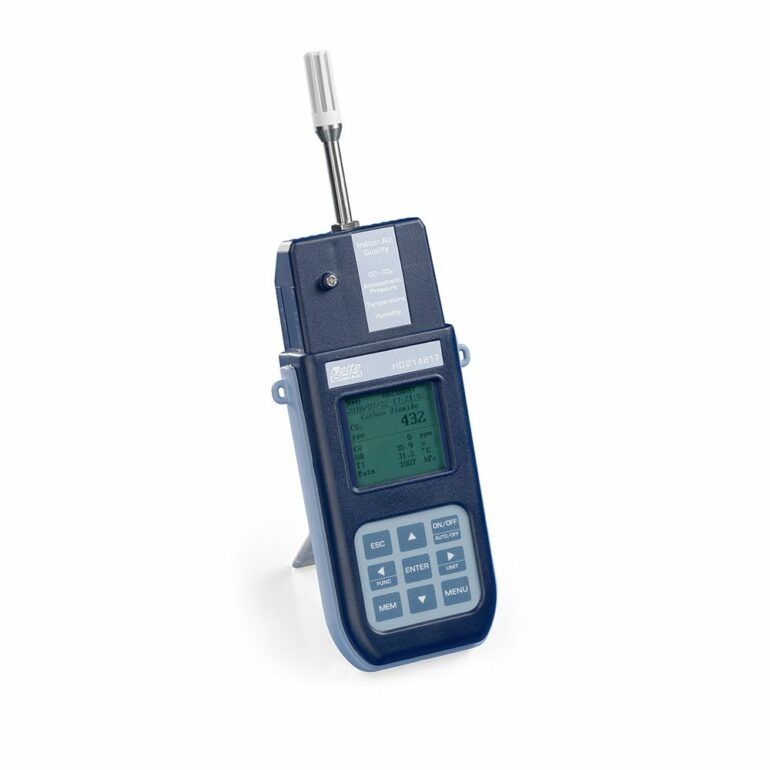Most people know air pollution exists outside from cars, trucks and industry, but many are unaware their indoor air quality could be worse than that of a big city.
Until now, there has been no easy way to measure indoor air quality given the size and complexity of the equipment—it would likely fill a single car garage and need several scientists to operate it—but researchers at York University have designed an instrument that could assess pollution levels inside homes and businesses.
The total reactive nitrogen (tNr) instrument, developed by York University Assistant Professor Trevor VandenBoer of the Faculty of Science along with former York Postdoctoral researcher Leigh Crilley, uses an oven to measure a variety of chemicals that make up indoor air pollution and is the size of a small bookcase on wheels. In the future, it could be loaded onto a truck and navigated through the doorways of homes and businesses to measure reactive nitrogen species in the air in a kitchen, bedroom or basement by existing professionals with similar training to energy auditors.
“The purpose of this instrument is to target emissions we know come from cooking and cleaning and have a huge impact on our indoor air quality. Managing indoor air quality involves more than just using the range hood over your gas stove, especially when your space is sealed tight for winter,” says VandenBoer.
“Some of the pollutants, or reactive nitrogen species, can come from stoves, furnaces, fireplaces or even burning candles, but it can also come from food you cook, such as a steak or a piece of fish. Cooking can have a large impact on the level of indoor pollutants, such as ammonia and amines.”
Using a gas stove, compared to an electric hot plate, would also emit much higher levels of chemicals that would become airborne, such as gas-phase nitrous acid, as well as nitrogen oxide and nitrogen dioxide.
Cleaning, building materials and even human breath and skin emissions can be other significant sources of indoor air pollution. Even using cleaning staples, such as hydrogen peroxide and bleach, can create high emissions and lead to significantly worse air quality, says the researchers.
“There is a need for this kind of tool to measure indoor air quality, especially given the detriments to health associated with high levels of reactive nitrogen oxides,” says Crilley. “Typically, there has been no good way to measure the average home’s indoor air quality and this instrument could provide an unobtrusive way to do that.”
The researchers tested the tNr instrument in a commercial kitchen, known for its complex indoor environment with rapidly changing levels of pollutants. Compared to the more passive method for testing indoor air pollution, this method was able to detect about 82% of reactive nitrogen species.
Although not immediately available for use, the idea is that the instrument could provide people and businesses with a good understanding of their levels of indoor pollution so they can take steps to address it.
The idea for designing the open-source components of the instrument came from an earlier study where the researchers measured the indoor air quality of a home in New York and found unexpectedly high pollutions levels.
“We realized we really needed new instruments to study the pollution in these spaces,” says VandenBoer. “There are still a lot of outstanding questions. For example, is the air in your indoor space safe for you to breathe? What makes indoor air good or bad? Could there be simple things we could do? These are questions that atmospheric chemists are just beginning to turn their attention to.”
The paper, “An instrument to measure and speciate the total reactive nitrogen budget indoors: description and field measurements,” was published in Environmental Science: Processes & Impacts.
More information:
Leigh R. Crilley et al, Emerging investigator series: an instrument to measure and speciate the total reactive nitrogen budget indoors: description and field measurements, Environmental Science: Processes & Impacts (2023). DOI: 10.1039/D2EM00446A
Citation:
A portable instrument to measure indoor air pollution (2023, March 23)



